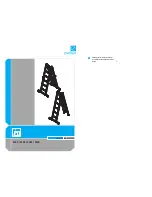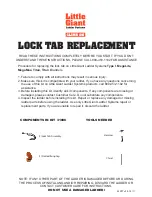
8
• Check for completeness and secure attachment.
Rungs, treads, guide brackets, platform
• Check for deformation and cracks.
• Check for dents, damage, sharp edges, chipping, burrs and
signs of wear.
• Check that they are securely attached to the stiles.
• Check for signs of wear and for proper functioning of the
locking mechanisms (e.g. locking latch, rung hook).
Ladder feet, castors
• Check for damage and corrosion.
• Check for signs of wear and proper functioning.
• Check for completeness and secure attachment.
Markings
• Check for legibility and damage.
Accessories
• Check for completeness and secure attachment.
Soiling, dirt
• Check for soiling caused by paint, dirt, grease and oil.
8 Transportation and storage
• Store ladders in such a way that they cannot be damaged
(e.g. bent or twisted).
• Protect ladders from the influence of weather and keep
them from unauthorised use (e.g. by children) while they are
in storage.
• While transporting ladders to or from the place of storage,
they should be properly secured to keep them from sliding
and prevent impact and accidents.
• Do not throw the ladders during loading and unloading.
• When transporting ladders, properly secure them on a ve-
hicle's roof racks or in its interior.
9 Packaging and disposal
• The packaging presents a risk of suffocation. Dispose of the
packaging material properly.
• Dispose of ladders and their parts in accordance with local
laws and regulations.











